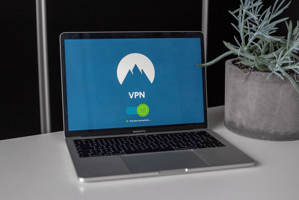The changing technology careers landscape is impacting the way organizations approach onboarding...
Build a Cloud Security Strategy That Exceeds Cybersecurity Standards

Shifting a business network away from on-site hardware requires a cloud security strategy to keep digital assets out of the hands of prying eyes and hackers.
The shift to cloud-based business systems reportedly accelerated during the pandemic. This was a natural phenomenon, given the explosion of workers who needed to pivot to remote positions. Business decision-makers are largely keeping remote jobs in place to reduce office expenses and take advantage of talent outside their traditional commuter radius.
But by leveraging the cloud, companies are tasked with ensuring the cybersecurity standards of their industry are met or exceeded. By onboarding scalable cloud security services from an experienced third-party firm, your organization can lower expenses, improve productivity, and keep digital assets safe.
What Cybersecurity Standards Apply to the Cloud?
When your organization migrates to the cloud, all the same, cybersecurity compliance regulations remain in place. This can prove problematic when someone simply swipes a credit card and moves access to valuable and sensitive information from its physical, in-house network.
A cloud services provider is not necessarily obligated to establish policies and procedures that comply with laws such as Health Insurance Portability and Accountability Act (HIPPA), Europe’s General Data Protection Regulation (GDPR), the U.S. Department of Defense’s Cybersecurity Maturity Model Certification (CMMC), or individual state mandates such as the California Consumer Privacy Act (CCPA).
Once your operation stores, transmits and accesses information from the cloud, the appropriate cybersecurity standards must be in place or you could face the consequences of non-compliance. If you recently made the transition, are not confident about your defenses, or are planning a migration, it’s essential to enlist the support of a cloud security services provider.
3 Pillars of a Durable Cloud Security Strategy
Nearly 60 percent of businesses have migrated to the cloud and this trend is expected to continue. In 2020, more than 90 percent of companies employed a multi-cloud strategy. While cost-effective, the complexity of such business approaches calls for a cloud security strategy that can shield digital assets. These are fundamental ways to exceed industry-specific cybersecurity standards.
1: Network Access Management
One of the common cybersecurity faux pas involves failing to eliminate the accounts of former staff members. It may come as something of a surprise, but one of the most damaging hacks of the 21st century was reportedly the result of a former intern posting their password on GitHub. The Solar Winds breach that allowed cybercriminals to infiltrate widespread businesses and government agencies started with an intern’s profile and hackers discovering the password was, brace yourself, “solarwinds123.”
Identity management policies require in-house IT staff or the cloud security services provider to know when personnel is exiting the organization. By decommissioning the login profile, companies can avoid the reputational hit and class action lawsuit Solar Winds suffered in 2021.
Another crucial element of network access management involves designing credentials to fit the user. Too many organizations allow staff members, vendors, and stakeholders to log into their network with carte blanche access. By employing a zero-trust cloud security strategy, users can only access the information they need to complete tasks. Should a hacker figure out their weak “123” password, the cybercriminal’s access is equally restricted.
2: Data Protection
Policies such as zero-trust help protect data. But a determined cloud security strategy needs to go much further. That’s why data encryption is a hot-trending strategy used in conjunction with the cloud.
There are two distinct ways that data encryption works with cloud-based systems. The first involves the encryption of information being transferred from desktops, laptops, and other endpoint devices. An experienced third-party firm can include this as part of a cybersecurity checklist you’ll need to consider when building a defensive posture.
The other type of encryption involves stored, or at rest, information in the cloud. While robust cybersecurity measures can deter garden variety hackers, sophisticated cybercriminals will search for vulnerabilities or exploit an unsuspecting employee. Should they manage to break in, encrypted data can render their efforts useless.
3: Detection and Response
The data protection laws that apply to your industry are not necessarily interested in how you will pick up the pieces after a debilitating hack. Exceeding regulatory standards requires proactive cybersecurity measures. To accomplish the gold standard, it’s critical to have threat detection capabilities in place.
Deploying AI to identify emerging threats, send out alerts, and respond is an excellent way to nip a data breach in the bud. If your organization has the resources, an experienced cybersecurity outfit can also engage in threat hunting. By utilizing these and other proactive cloud security strategies, you won’t need to worry about exceeding regulatory compliance mandates.
What a Cloud Security Services Firm Can Do for You
At CyberTeam, our managed IT and cybersecurity consulting experts have the experience and technology to protect your cloud-based company from a data breach. We start by conducting a risk assessment to gain a clear understanding of your system’s strengths and vulnerabilities. Schedule a risk assessment with us and begin the process of improving your defenses.





